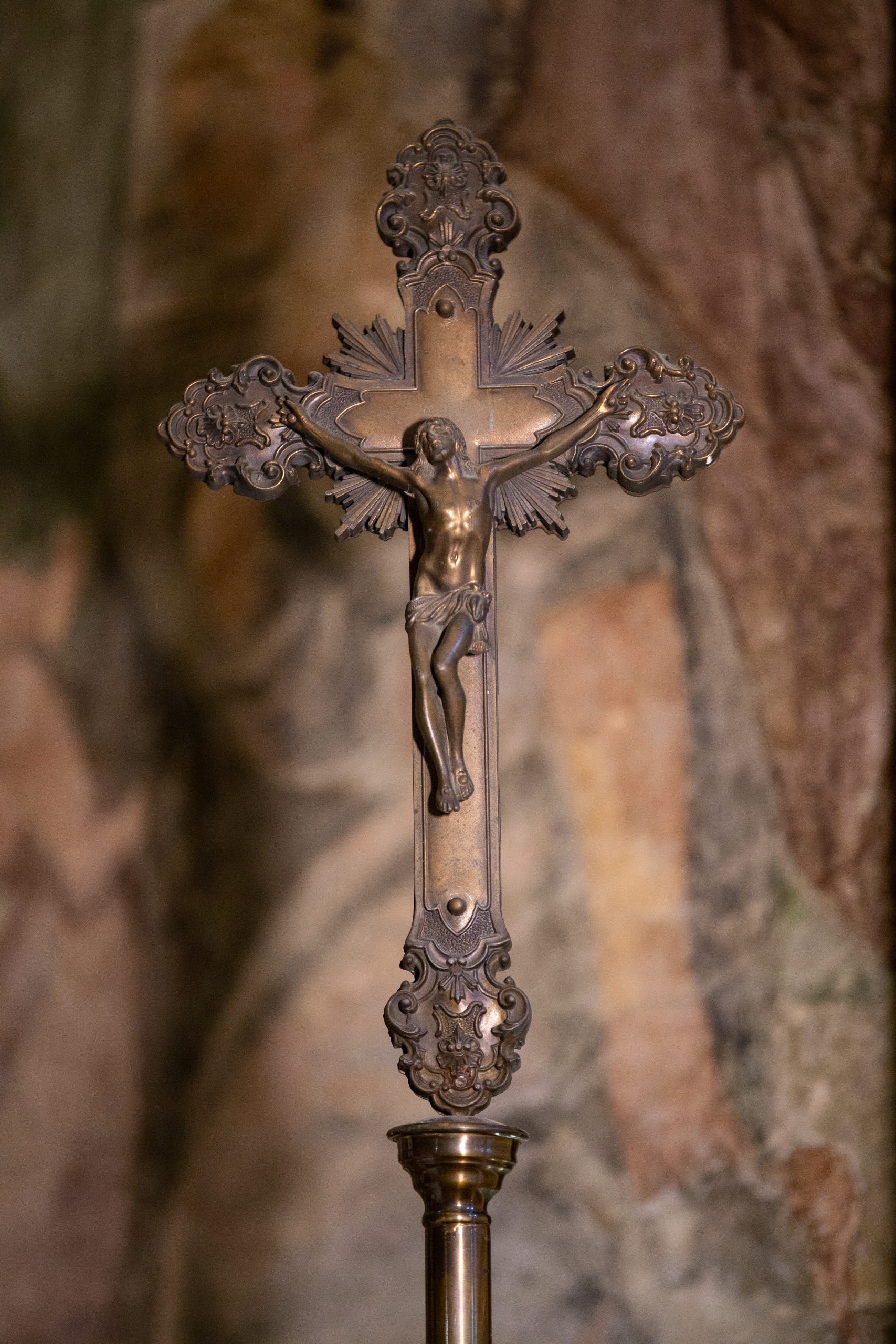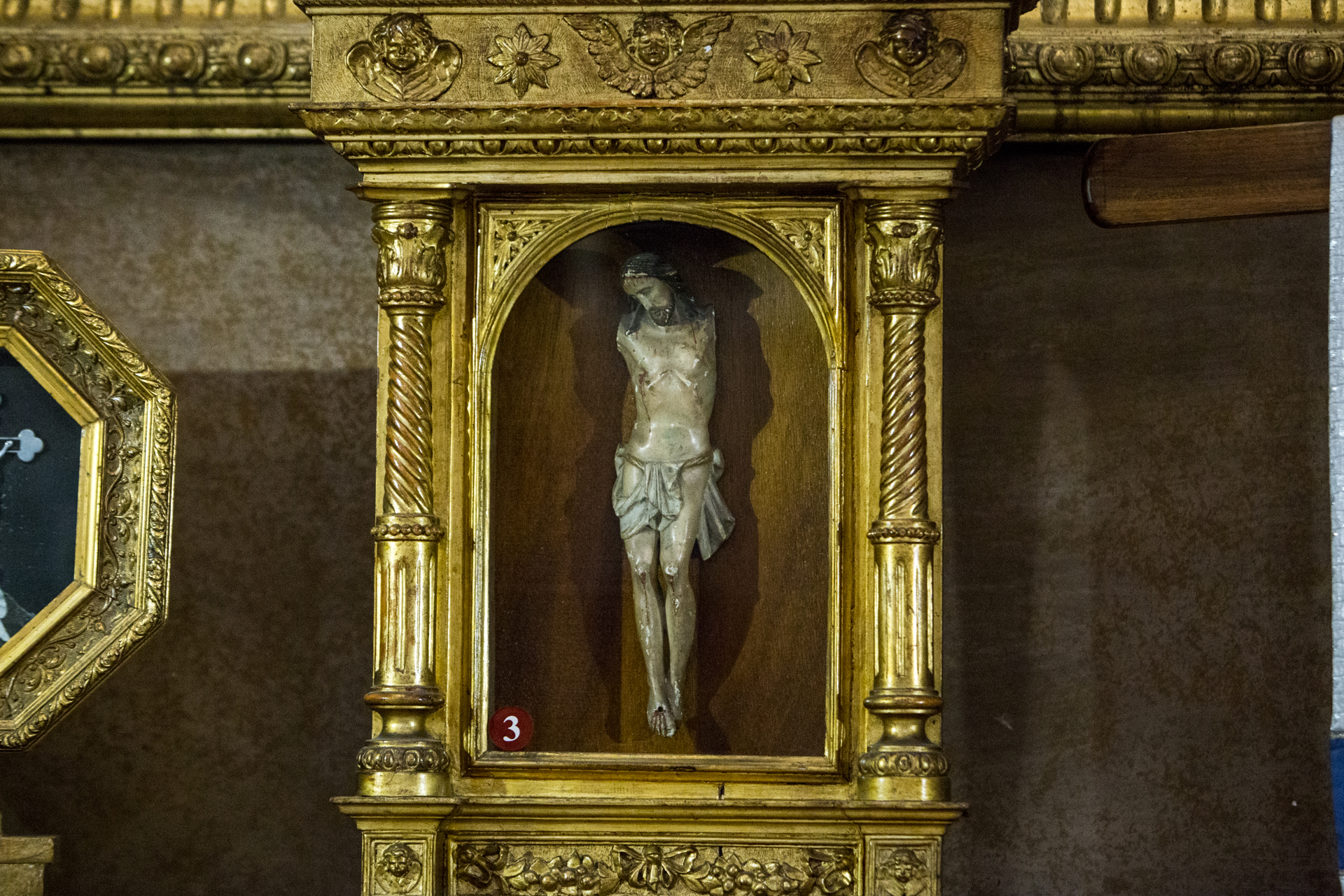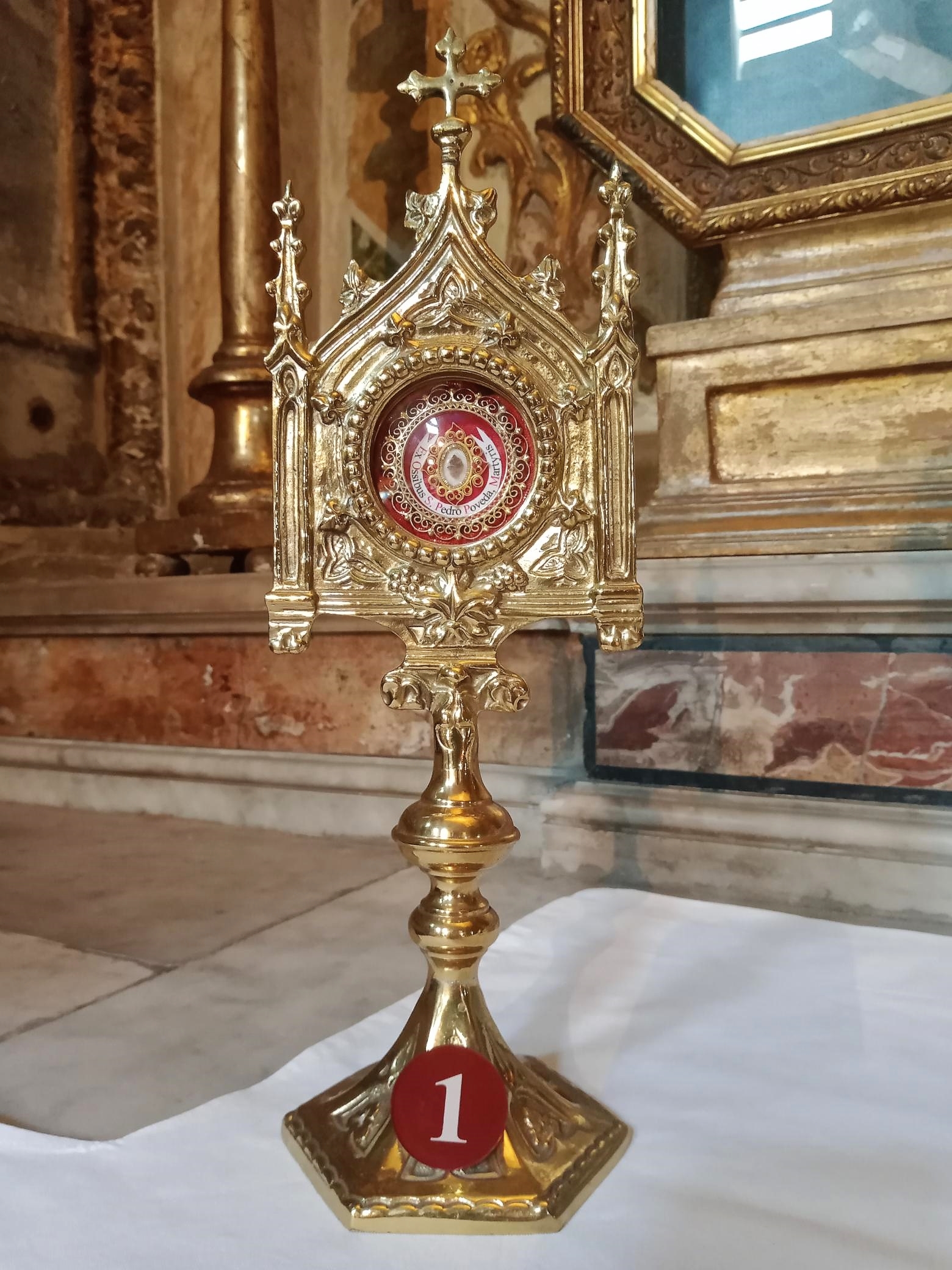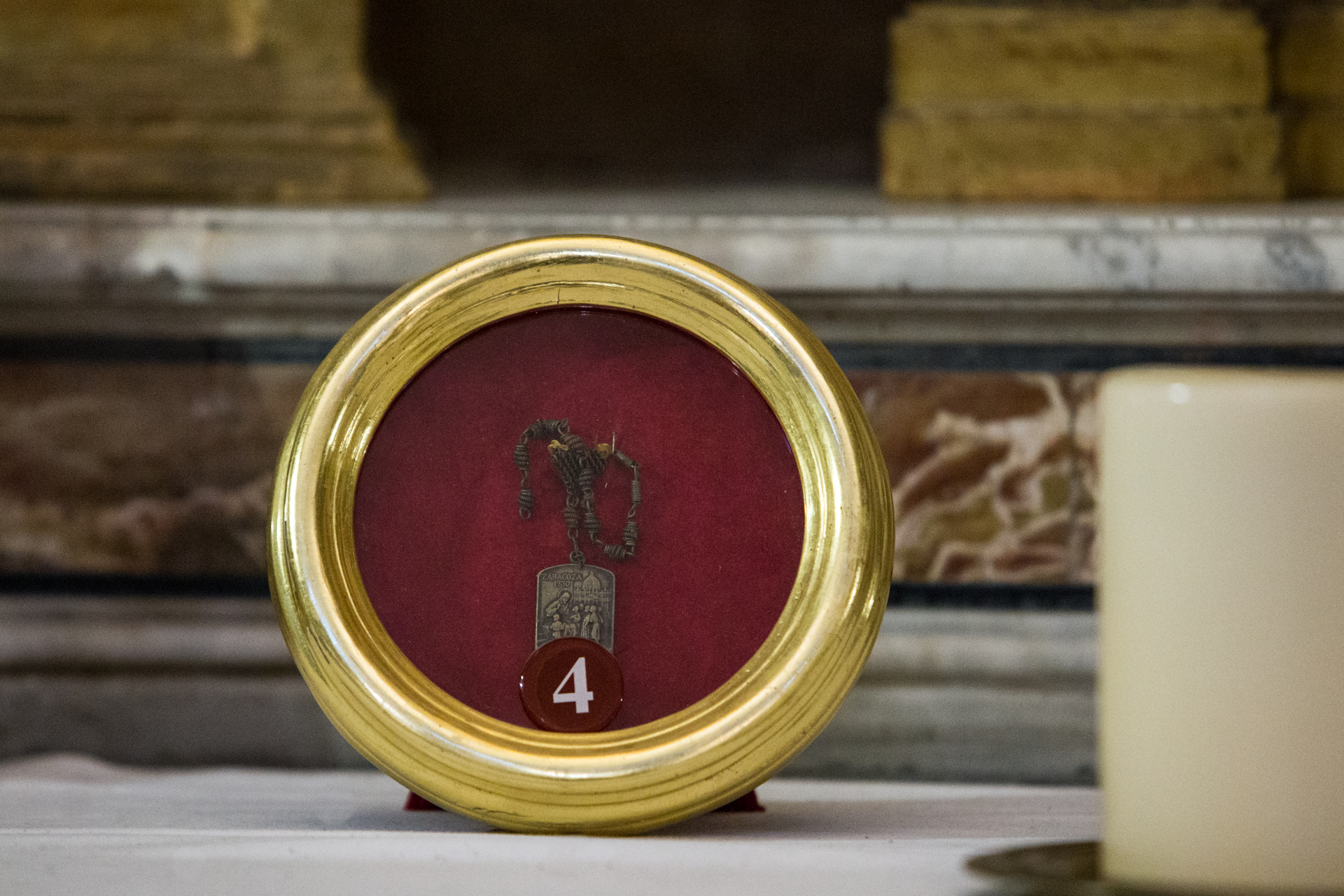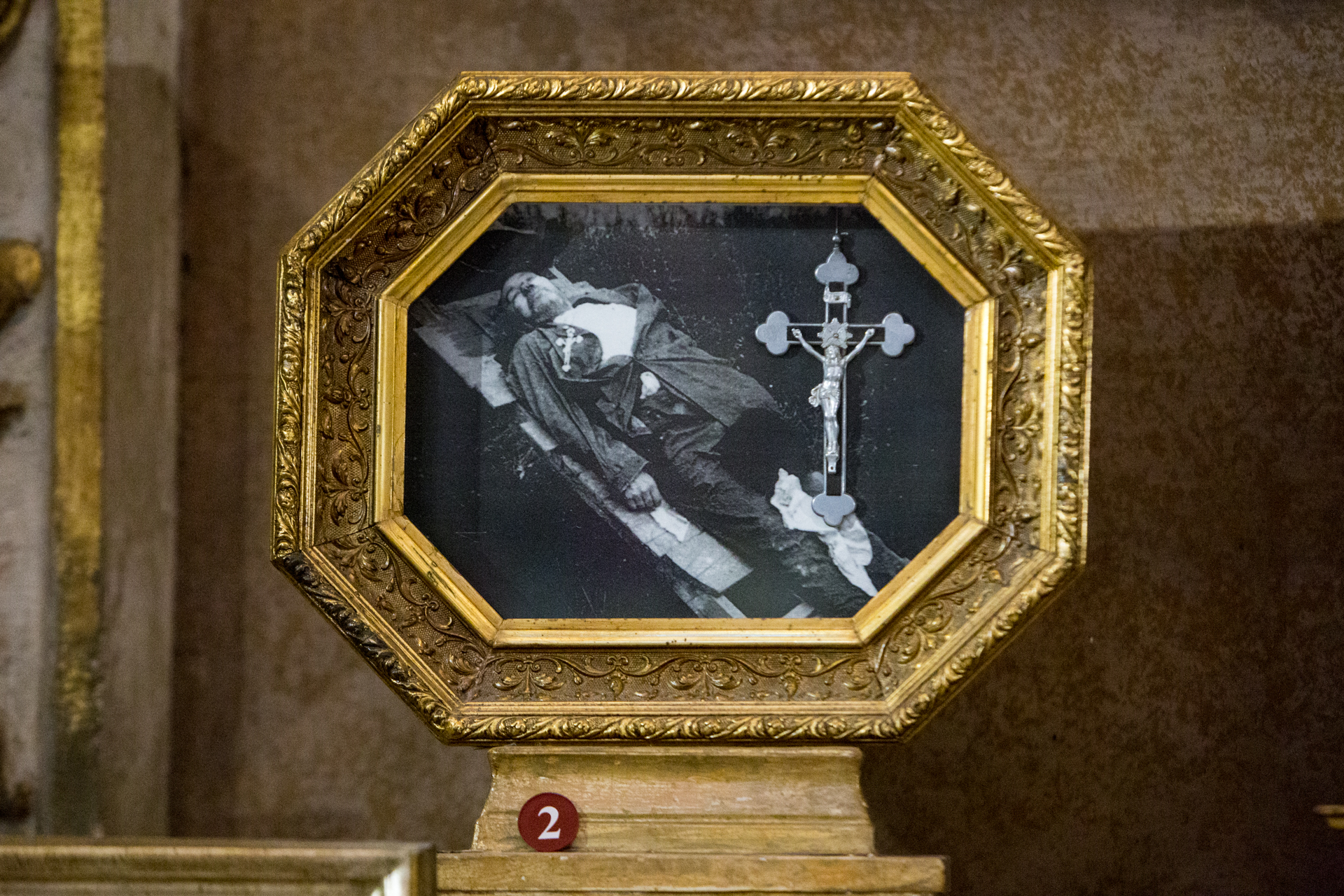Mutilated crucifix, recovered from the church of San Martì de Palafrugell (Catalonia) set on fire during the Civil War in Spain (1936-1939).
In 1931 King Alfonso XIII left Spain, voluntarily going into exile, due to pressure from political parties hostile to him following the defeat of his candidates in local elections held the year before. Thus the second Spanish republic was born, with Niceto Alcalá-Zamora y Torres as president, which in the first general elections of that year saw the clear victory of a front formed by republicans and socialists.
The policy of the new government, aimed at transforming the country with profound social reforms, was characterised from the outset by a climate saturated with anti-clericalism accompanied by explosions of anti-religious fury, inspired and organised by anarchists and radical socialists and tolerated by the government. Andrea Riccardi writes in his book ‘The Century of Martyrdom’: ‘In the 1920s the Church was considered one of the pillars of Spanish society, so much so that it appeared internal to the monarchical regime and an authoritarian conception of political life. Obviously, not all of the Spanish Church thought its future necessarily within the monarchical framework, or at least was not committed to restoring it, as shown by the respectful attitude of a good part of the ecclesiastical hierarchy towards constituted authority.” However, the political change taking place was accompanied by a climate of confrontation with all forces perceived as conservative, thus including the Church. The contrast was, moreover, fuelled by the strong anarchist and even anti-religious tradition rooted in the country, the growth of trade union organisations and socialist demands, and the desperate situation of millions of Spanish citizens plagued by extreme poverty; only 90 families owned the vast majority of land, which was generally poorly utilised.
The general elections of 1933 saw the victory of a centre-right coalition. Against the new government on 8 December 1933, anarchist uprisings broke out all over Spain, which saw particularly violent strikes, assaults on the Guardia Civil barracks and the procured derailment of the Barcelona-Seville train.
Starting in January 1934, the new (centre-right) government began to suspend some of the reforms initiated in the previous two years such as the agrarian reform. After a series of governmental crises, the elections of 16 February 1936 saw the victory of the Popular Front (Frente Popular), composed of left-wing parties. Following the victory, new violence was unleashed in the country, partly due to the left-wing forces who, in the euphoria of victory, attacked the private properties of the wealthy and churches. The exacerbation of the anti-religious climate described above gave rise to a veritable religious persecution, which led to the destruction of 70% of Spanish churches and the murder of almost ten thousand people, including 13 bishops, 4,184 priests and seminarians, 2,365 religious, 283 nuns and several thousand lay people of both sexes, the number of which it is impossible to specify, however.
As is known, the general chaos that characterised Spain at that time was the spring that favoured the rise, first military and then political, of dictator Francisco Franco.
